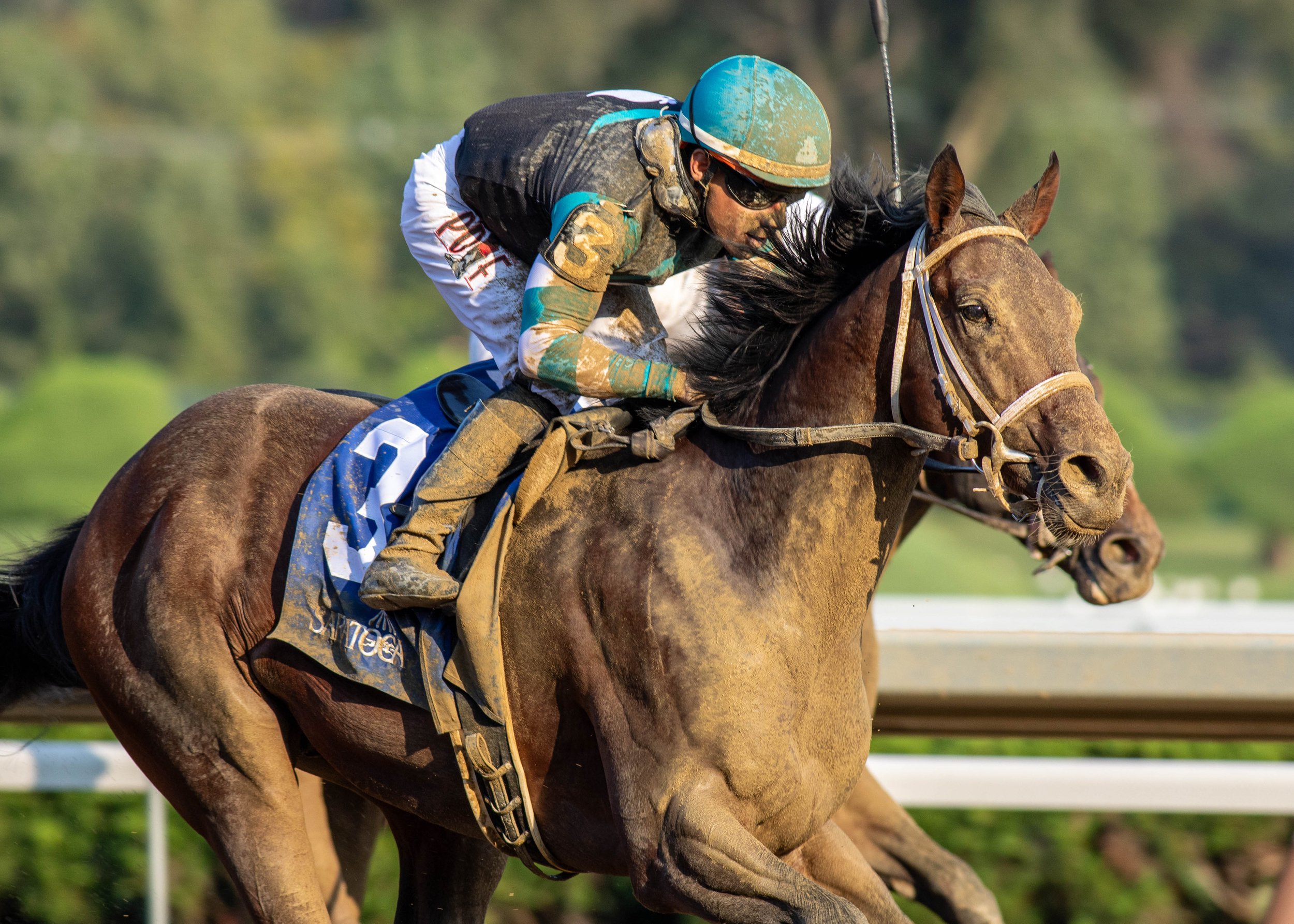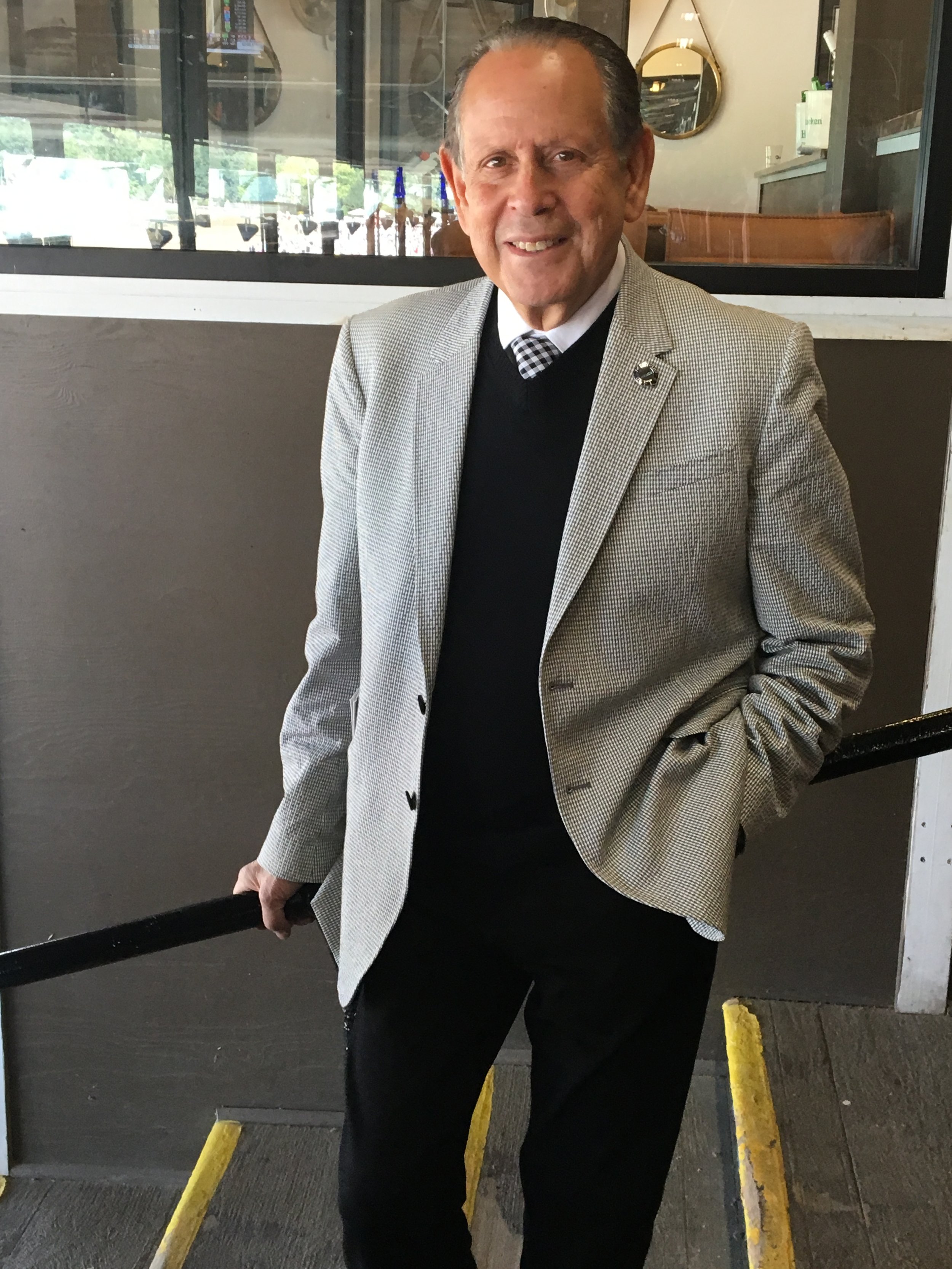Graded Stakes Winning Owners - Bill and Tammy Simon (WSS Racing) – Brightwork
/Article by Bill Heller
Bill Simon, the former president and CEO of Walmart, quickly learned the difference between Walmart and racing. “There’s no everyday low pricing in horse racing,” he laughed.
Simon was at Walmart from 2006–2015. “Do I miss it?” he said. “I miss the people. But I don’t miss a million and a half people reporting to me. When I left Walmart, I was looking for something to share with my wife Tammy. She grew up on a farm in North Carolina.”
Thoroughbreds seemed like a good fit. Success came surprisingly quickly.
“We’re very methodical,” Simon said. “I try to work with good people.”
He certainly has two good people—his trainer John Ortiz and his bloodstock agent Jared Hughes. Oritz said his connection with the Simons “has been life-changing. They’re so supportive. They make me better, not only as a trainer, but also as a person.”
Ortiz knows he’s working with a remarkable person.
Born in Manchester, Connecticut, Simon graduated from the University of Connecticut, earning a Bachelor of Arts in economics and an MBA in management. While in college, he made his first trip to a racetrack, going to Saratoga Race Course.
He served in the U.S. Navy and Naval Reserves for 25 years, receiving commendations for combat service in Grenada and in Lebanon as part of a multinational peacekeeping force. At Walmart, he was instrumental in the company’s pledge to hire any returning veteran.
Before Walmart, Simon worked at several global companies including Brinker International, Diageo, Cadbury-Schweppes, PepsiCo and RJR Nabisco. He developed and launched Smirnoff Ice in the United States.
In the public sector, he was secretary of the Florida Department of Management Services, dealing with health care benefits, human resources, the Florida retirement system, facilities management and real estate from 2002 through 2004.
From 2018–2020, he served as chair of the Defense Business Board for Defense Secretary James Mathis. He is currently a senior advisor to the investment firm KKR and is the founder and president of WSS Venture Holdings.
Because of his vast experiences, Simon felt it unnecessary to hire a top-tier trainer and is very happy he chose Ortiz and Hughes. “I’ve already done a lot of things in life,” Simon said. “I traded spreadsheets and profits and losses statements for pedigrees and Racing Forms. It starts with two years trying to figure out where we could operate in this business. We started with claimers as everybody does. Then we focused on buying young horses.”
He’s delighted he has Ortiz and Hughes on his team: “I’m learning from Johnny and Jared. I have some things to teach them, too. I know how to run a business. This is a hard business. We grow together. Jared is a good horseman. John is an incredibly intuitive horseman. We have a better chance because we’re doing the work together. A lot of it is good, hard work.”
The work has paid off. Bill and Tammy found two relatively cheap stars. Barber Road, named for a road in North Carolina, cost $15,000. He broke his maiden in a $30,000 claimer. Simon told Molly Rollins in a March 8, 2022 story in the Blood-Horse, his rationale for the drop-down after Barber Road finished a distant fourth in a maiden special weight debut: “We knew he was special, but we thought, well, you know a $15,000 weanling running in a $30,000 maiden claimer—no one is going to take him; so why not give him a really good blow against an easier crowd and get things started? And that’s what we did. You have to be brave to take a $15,000 horse running for $30,000.”
After a 6 ¼-length romp in a starter allowance, Barber Road took the Simons on the 2022 Kentucky Derby trail, finishing second in the $200,000 Lively Shively Stakes, second in the $250,000 Smarty Jones Stakes and second again in the Gr. 3 Southwest Stakes. He was beaten just a half-length when third in the Gr. 2 Rebel, and finished second again in the Gr. 1 Arkansas Derby.
That led him to the 2022 Gr. 1 Kentucky Derby. He rallied from far back to finish sixth. “We had a huge Kentucky Derby party,” Tammy said. “It was really a neat thing for everybody. It was great. That meant so much to me and my family.,”
Barber Road finished seventh in the Belmont Stakes and most recently was fourth in the Gr. 3 Blame Stakes at Churchill Downs, June 3. He’s made just under $800,000.
The Simons’ undefeated two-year-old filly Brightwork, who upped her record to four-for-four by winning the Gr. 1 Spinaway Stakes at Saratoga September 3, cost $95,000 and has already earned $444,051. She’s never been the favorite in any of her starts, including a five-length romp in the Gr. 3 Adirondack Stakes before the Spinaway.
“I kind of like not being the favorite,” Tammy said. “That little filly has been amazing. To watch her come down that stretch at Saratoga—it was such an incredible feeling. Her breeders were also there with us. I turned around and every one of us was crying. It was John’s first Gr. 1 and our first Gr. 1. It was really special. She’s a diva. She knows she’s special.”
Her husband said he wasn’t too nervous before the race: “Whenever I get nervous, Johnny tells me in poker, you don’t know what other people’s hands are, but you know your hand. I loved my hand.”
After the Spinaway, he said of her half-length victory at Saratoga, “I never imagined we’d win at a place like that. Holy cow! I’m excited to see what she does next.”























